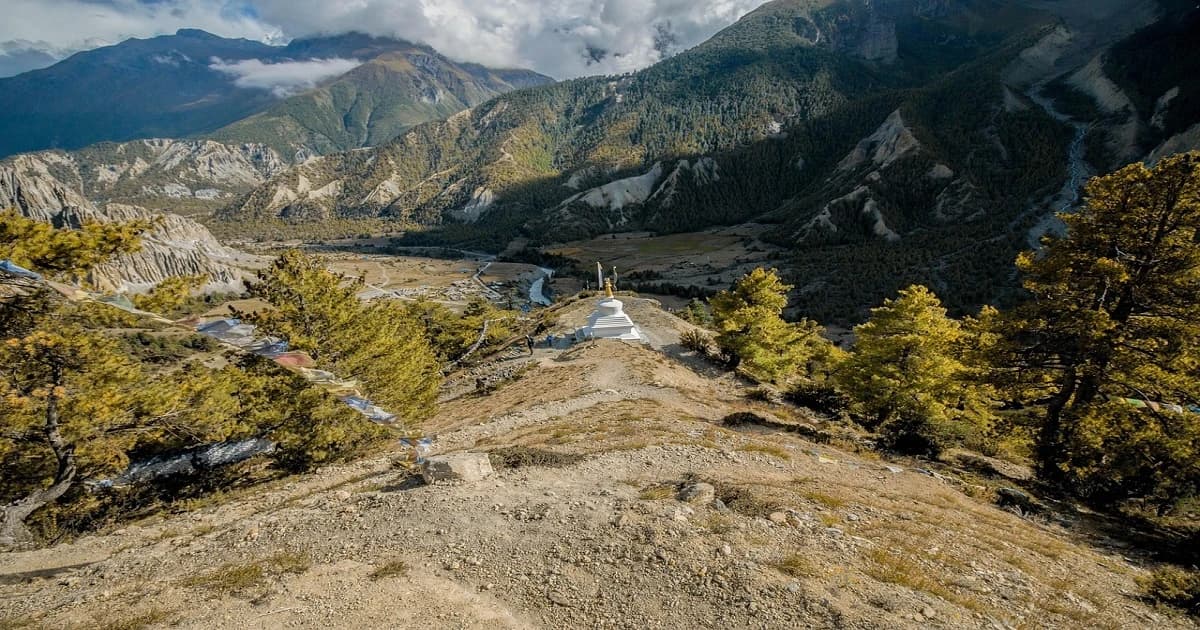The Annapurna Circuit Trek is one of the most legendary treks in the world, offering awe-inspiring views of the Himalayas, diverse landscapes, rich cultural immersion, and a profound sense of adventure. But for those new to trekking, one question often arises: Is the Annapurna Circuit Trekking suitable for beginners?
The answer is both yes and no—it depends on your fitness level, preparation, and expectations. This blog will explore what the Annapurna Circuit entails, the challenges beginners may face, and how to prepare if you're a novice trekker dreaming of this iconic journey.
What is the Annapurna Circuit Trekking like?
The Annapurna Circuit is a long-distance trek through the Annapurna region in central Nepal. Our Annapurna Circuit Trek is of 15 days from your arrival to departure day. It circles the Annapurna Massif, traversing through subtropical jungles, alpine forests, river valleys, high mountain passes, and Tibetan-influenced villages.
The crown jewel of the trek is Thorong La Pass (5,416m/17,769ft) - one of the highest trekking passes in the world. From rice terraces in the lower regions to the barren high-altitude plateaus near Mustang, the Annapurna Circuit offers unmatched diversity in scenery and experience.
Why the Annapurna Circuit Appeals to Beginners
Despite its reputation as a high-altitude trek, the Annapurna Circuit remains popular among beginners for several compelling reasons:
Well-Marked Trails
The trail is well-established, marked, and supported by a robust network of teahouses (basic lodges), making it logistically easier than more remote Himalayan treks.
Access to Services
Unlike isolated routes, the Annapurna region offers reliable food, accommodation, and even Wi-Fi in many villages. Beginners can feel a bit more secure with these comforts along the way.
Stunning Diversity
Within days, you'll move from terraced fields to glacial terrain—offering a condensed version of Nepal's natural and cultural variety. This diversity keeps the trek engaging for first-timers.
Challenges Beginners May Face on the Annapurna Circuit
While it's beginner-friendly in some ways, the Annapurna Circuit is not a walk in the park. Here are the main challenges that first-time trekkers should consider:
Altitude Sickness (AMS)
The biggest risk is Acute Mountain Sickness, especially near Thorong La Pass. Symptoms like headaches, dizziness, or nausea can develop quickly at high elevations. Proper acclimatization is non-negotiable.
Physical Endurance
Though the trail doesn’t require technical climbing skills, daily treks of 5–7 hours carrying a daypack (or more if unguided) can be physically demanding. Steep ascents, rough terrain, and cold weather test your stamina.
Weather Conditions
Weather in the Himalayas can change rapidly. Snow, rain, or strong winds are common—especially at higher altitudes. Trekking in shoulder seasons like spring (March–May) or autumn (September–November) helps avoid weather extremes.
Logistical Planning
Permits (TIMS & ACAP), transportation, gear, and choosing a reliable guide or porter—all require solid preparation. Without experience, planning can feel overwhelming for beginners.
But we are you solution. When you book the adventure with us, everything during the adventure will be taken care of. You do not need to worry about any logistics.
Fitness and Preparation Tips for Beginners
If you’re a beginner wondering whether you can take on the Annapurna Circuit, preparation is the key to success. Here's how to get ready:
Train in Advance
Start preparing 2–3 months in advance with cardiovascular workouts (running, cycling, hiking) and strength training. Practice hiking with a backpack and walking for several hours at a stretch.
Acclimatization is Crucial
Our itinerary has been designed with necessary acclimatization day, enough rest, and an ideal pace during the trek. The itinerary follows the standard rule: “Climb high, sleep low” and “no more than 500m gain per day” above 3,000 meters.
Pack Smart
Packing smartly is one of the keys to make your adventure enjoyable. We will have porters to carry your stuff in the mountains. You will need quality trekking boots, layers for warmth, rain gear, a water purifier, and basic medication.
Here is a list of what to pack for the adventure.
A Day on the Annapurna Circuit: What to Expect
Here’s what a typical day might look like on the trail for a beginner trekker:
- 5:30–7:00 AM: Wake up, eat a hearty breakfast (often pancakes, porridge, or eggs).
- 7:30 AM–12:00 PM: Trek through diverse terrain, crossing villages, rivers, and forests.
- 12:00–1:00 PM: Lunch at a teahouse along the trail.
- 1:30–4:00 PM: Continue trekking to the next destination.
- 4:30 PM onward: Check-in at a teahouse, rest, have dinner, and sleep early.
But it may be different on different days and the guide will plan and adjust the timing as you trek in the mountains.
When is the Best Time for Beginners to Trek the Annapurna Circuit?
Timing your trek well can make a big difference. Here are two main seasons to enjoy Annapurna Circuit Trekking.
Spring (March to May)
- Rhododendron forests bloom.
- Mild temperatures.
- Stable weather.
Autumn (September to November)
- Best mountain views.
- Dry, clear skies.
- Peak trekking season (can be crowded).
Avoid monsoon (June to August) due to landslides and winter (December to February) due to snow-covered passes and cold temperatures.
Should Beginners Attempt the Annapurna Circuit?
Yes, for sure, but with ample preparation and realistic expectations.
The Annapurna Circuit is absolutely within reach for beginners who are physically prepared, mentally committed, and well-informed. While it’s not the easiest trek, its cultural richness, breathtaking scenery, and well-supported trail system make it an ideal adventure for those willing to step out of their comfort zone.
If you're drawn to the Himalayas and up for a challenge, the Annapurna Circuit can be a life-changing introduction to the world of trekking.
Let us know if you have any questions about Annapurna circuit trekking or any other trekking adventures in Nepal.





